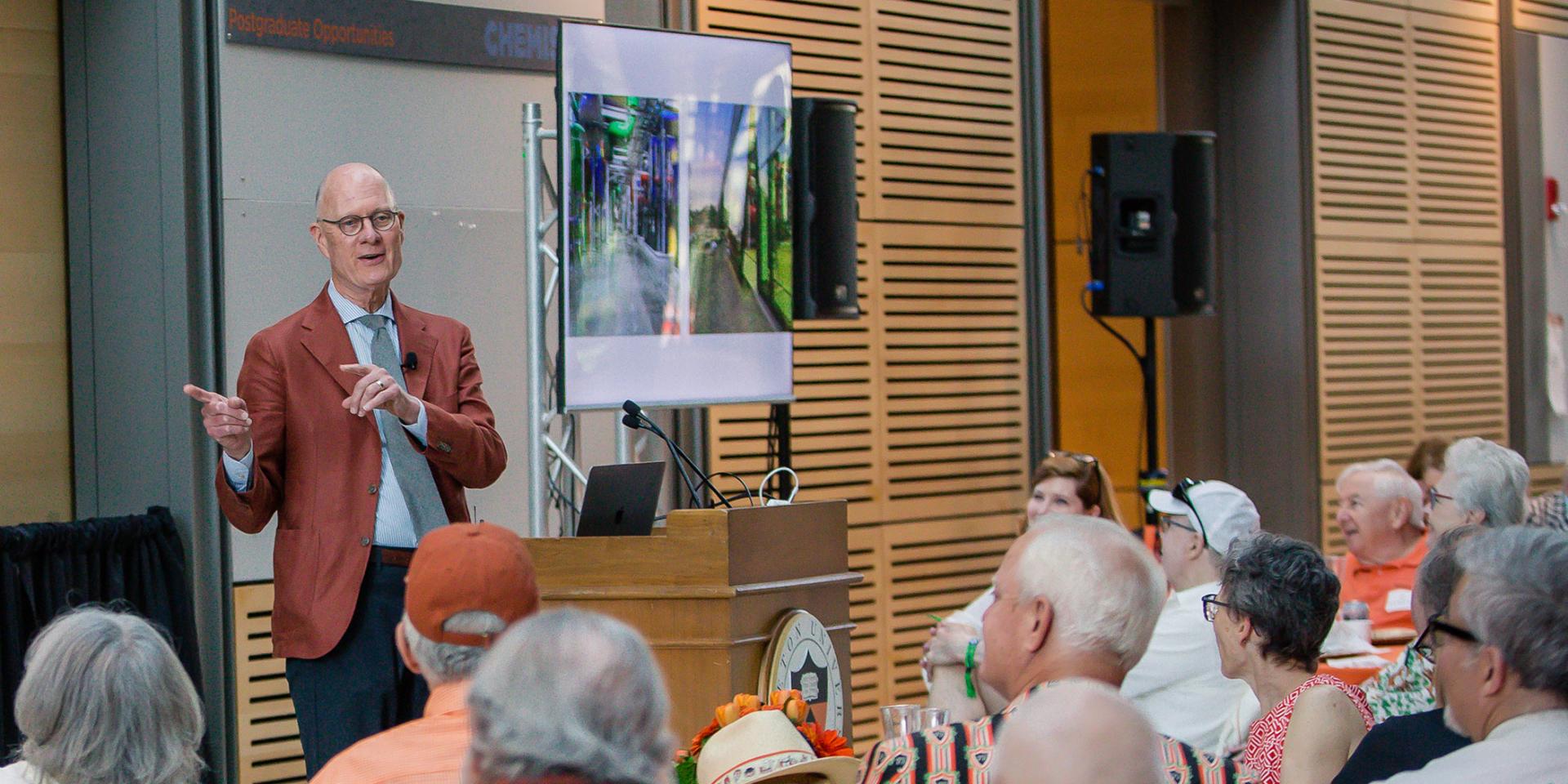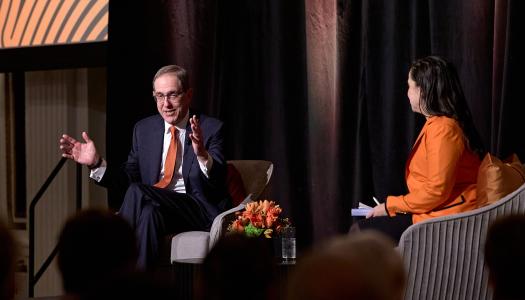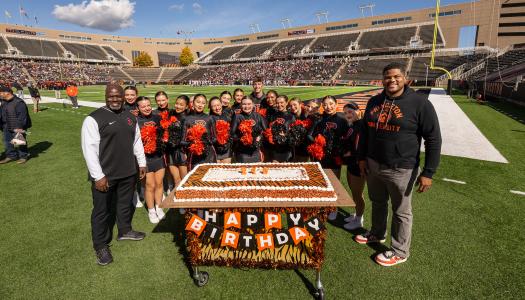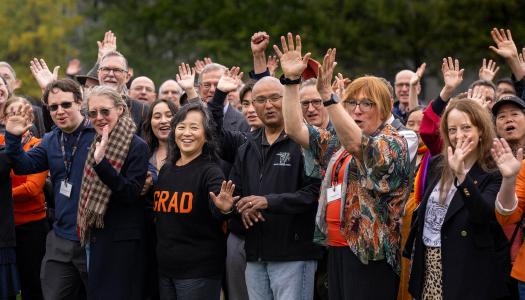Photo by Andrea Kane
1746 Society Reunions seminar: University Architect presents ‘Stewardship and Growth of the Princeton Campus’
University Architect Ronald McCoy *80 addressed alumni and friends during the annual 1746 Society Reunions breakfast seminar on May 25 at Taylor Commons in Frick Chemistry Laboratory. His topic was “Stewardship and Growth of the Princeton Campus.”
McCoy has served as the University architect since 2008. In this role, he provides overall guidance for planning both the architecture and landscape of the campus, collaborating with some of the world’s leading architects and designers. McCoy led the effort to create the 2026 campus plan, which provides a comprehensive framework for the largest period of growth in the University’s 278-year history. Under his leadership, the University has added approximately 5 million square feet of new space while rehabilitating more than 60 heritage campus buildings and preserving Princeton’s architectural legacy and aesthetics. The campus plan also creates a path to carbon neutrality by 2046, including the construction of the second-largest geo-exchange energy system in North America.
McCoy’s talk, which gave an overview of current campus projects, was framed around the theme of stewardship. “Your gifts support the ability of the institution to achieve its mission going forward,” he said at the beginning of his remarks. “I’m going to share with you how we’re taking the gifts of colleagues such as yourselves to advance the mission of the University while also stewarding the great legacy of the campus.”
The seminar began with a look at campus growth over time, emphasizing the need to “steward that beautiful natural setting that really defines the sense of place that we’ve come to love as Princeton.” He shared key moments in campus planning, including drawings by Frederick Law Olmsted’s firm in 1893 and Ralph Adams Cram in 1911. The 2026 campus plan, he said, is the first time the University has looked ahead 30 years to design the campus, explaining that the plan is a “framework that allows the institution to make strategic decisions. So when a new quantum facility emerges on the horizon as a priority, we have an idea of where that quantum facility will go.”
McCoy gave an overview of the themes that have guided this generation of campus planning: the pathway to carbon neutrality (including converting the entire campus from steam to a geo-exchange heating and cooling system and greening the electric grid); the use of mass timber, which is more energy-efficient than concrete and steel; the shared beauty of a campus that includes at least 27 architectural styles; and landscape architecture as the connective tissue that stitches the campus together.
He then presented highlights of 20 major capital projects that are underway or have recently been completed, sharing details of how the themes have been thoughtfully incorporated. These projects include: Yeh College and New College West (finished in 2022); the Meadows Neighborhood (2024-2025), including graduate student housing and a new 175,000-square-foot racquet center; the new Princeton University Art Museum (2025), boasting a third-floor restaurant; the new home for environmental studies and the School of Engineering and Applied Science (2025) on Ivy Lane, “the largest building we’ve ever built on campus,” said McCoy; the Class of 1986 Fitness and Wellness Center (2025); the Frist Health Center (2025); Hobson College (2027); and Eric and Wendy Schmidt Hall (2029), a center for computer science.
Of particular interest to alumni was McCoy’s insight into an additional planning priority: “We design all of our buildings around Reunion tents,” he said to appreciative laughter. “We give the architects a drawing of the tent site and say, ‘You have to accommodate this tent site.’”
The seminar was preceded by a performance by the Katzenjammers, who delighted attendees with moving renditions of classics such as “Here Comes the Sun” and “Somewhere Over the Rainbow,” and led the singing of “Old Nassau.”
To learn more about the 1746 Society, visit its webpage.



